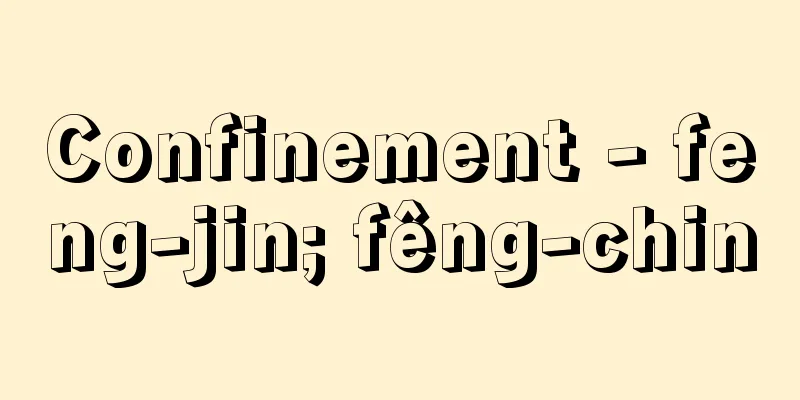Kantaka system - Kantaka system

|
In the late Middle Ages, it was used as a concept when considering the power structure of Sengoku daimyo in relation to the characteristics of kanko. There are various developments in terms of content, but broadly speaking, it can be divided into (1) the theory of connection with the collection of annual taxes, (2) the theory of connection with the division of labor and distribution, and (3) the theory of connection with the Muromachi shogunate's tansen. (1) focuses on the fact that it became customary to express annual taxes in kanko and that kanko was the standard for annual taxes or military service amounts, and argues that it played a role in deepening the chigyo system of Sengoku daimyo's vassals (feudal lord class) and quantifying the tax burden of peasants. (2) is based on the perspective of division of labor and argues that, within the economic control of the currency and division of labor distribution policies within the domain, Sengoku daimyo strengthened their economic control over their vassals (feudal lord class) and headman class, while completing the chigyo system and military organization based on kanmon (kanko). (3) emphasizes that the kanko system that the sengoku daimyo held in their hands was a unified standard for taxation within their territories, and that it was set in a unified manner from above based on the right to impose dansen that was granted to the shugo system of the Muromachi shogunate. He argues that the kanko system was established by the sengoku daimyo in order to uniformly collect taxes from the peasants and impose military service on their vassals (the feudal lords). The above theories are intertwined and not uniform, and there are many issues that remain to be addressed, such as the problem of regional variations and the relationship with the early modern rice yield system. [Masaki Kubota] "Sengoku Social History Theory" by Hisashi Fujiki (1974, University of Tokyo Press) [Reference item]Source: Shogakukan Encyclopedia Nipponica About Encyclopedia Nipponica Information | Legend |
|
中世後期、戦国大名の権力構造を貫高のもつ特性との関連で考える際の概念として用いられる。内容的には種々の展開をみるが、大別すれば、(1)年貢収取との関連説、(2)分業流通との関連説、(3)室町幕府段銭(たんせん)との関連説に分けることができる。(1)は、年貢の貫高表示の慣例化や、貫高が年貢あるいは軍役高の基準となっていたことに注目しつつ、それが戦国大名の家臣団(領主層)に対する知行(ちぎょう)制の深化と百姓の年貢負担の定量化をもたらす役割をもったとする。(2)は、分業流通への視点を基礎とし、戦国大名が領国内の貨幣・分業流通政策といった経済的統制のなかで、家臣団(領主層)、名主層への経済的支配を強化しつつ貫文(貫高)を基軸とする知行制・軍事力編成が完成していくとする。(3)は、戦国大名の掌握した貫高は領国内賦課の統一基準であり、それは戦国大名が室町幕府守護体制による段銭賦課権を掌握したことにより、これを根拠に上から強行的に統一設定されていくという点を強調し、貫高制は、戦国大名が百姓層への年貢などの収取と、家臣団(領主層)への軍役賦課を統一的に実現するために設定したものとした。 以上の諸説は相互に絡み合っており、一様ではなく、また地域的偏差の問題あるいは近世石高制との関連など、残されている課題も多い。 [久保田昌希] 『藤木久志著『戦国社会史論』(1974・東京大学出版会)』 [参照項目] |出典 小学館 日本大百科全書(ニッポニカ)日本大百科全書(ニッポニカ)について 情報 | 凡例 |
Recommend
logo light
…Recently, in the airspace around airports, they ...
pedestrian
… [concept] Sports is a general term for modern s...
Stroke play
...Shaft materials include carbon fiber and titan...
Chanchanko
A sleeveless, cotton-padded haori for children. I...
Franziska Elssler
Austrian ballerina who represents the Romantic ba...
Glenobotrydion
…The appearance of eukaryotic algae appears to ha...
Morning envoy - Choshuushi
〘Noun〙 Under the ritsuryo system, one of the four ...
Mallard duck - Gagamo
…They are also called monsters, demons, or demoni...
Yuremo - Yuremo
A general term for a genus of cyanobacteria and b...
Iheya [village] - Iheya
…Okinawa Prefecture, located northwest of Okinawa...
Vendée Rebellion - The Vendée Rebellion
The largest counter-revolutionary peasant revolt d...
Anthribiidae
…General term for insects in the family Anthribid...
The capital moved to Edo
... The new Meiji government, which was establish...
Kara Mustafa Paşa, Merzifonlu
[Born] 1634. Melziffon Died December 25, 1683. Gra...
Isegigumo - Isegigumo
…They are widely distributed in the eastern and s...









